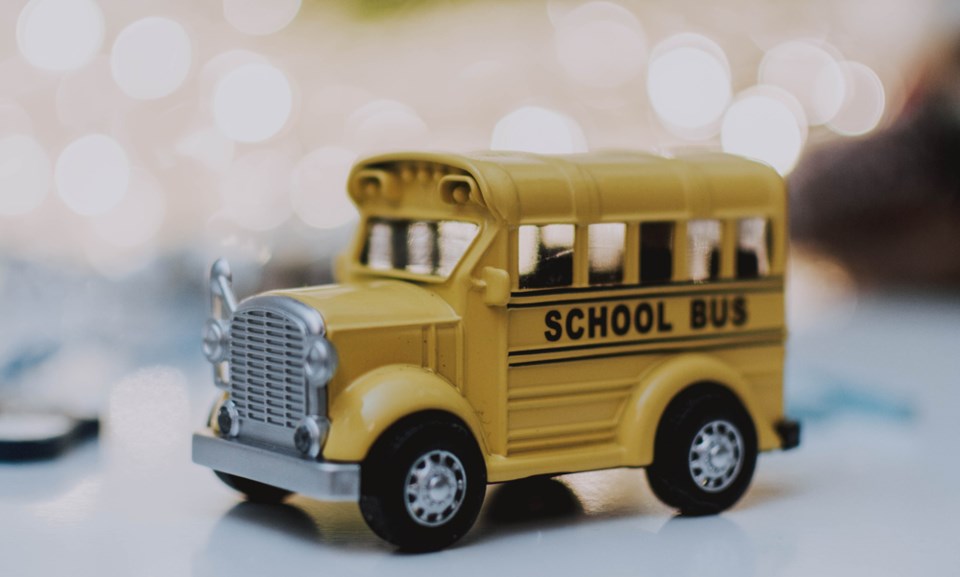Amid worries about COVID-19 re-emerging during the school year, some parents are concerned that in at least some cases, different learning groups will be in the same class.
The province has ordered schools to divide their students into cohorts, or learning groups, which are expected to mostly keep to themselves. In the Squamish area, these groups are expected to be 60 to 120 people. Elementary schools will use 60-person cohorts, and groups will get larger as the students approach high school. These groups would be divided into 20-to-30-person classrooms.
However, during their meeting on Sept. 2, school officials revealed that in at least some cases, classrooms will have children from several different cohorts.
Howe Sound Secondary’s principal said that in his school, there are a total of 49 sections of students.
In nine sections, officials expect there will be four different learning groups, said Nick Pascuzzi.
In six sections, officials expect there will be six different learning groups, Pascuzzi said.
There will be up to 30 students in each classroom, he said.
“What are some of the measures we can implement to ensure we can meet all of the safety guidelines?” said Pascuzzi.
“We’re working with our admin team, we’re working with teachers, given the space of our building, given the layout in terms of the space of our multi-purpose room, our library, our theatre...we feel that we should be able to implement some measures to spread the students out.”
This has made at least some parents raise their eyebrows.
“For me, the first thing that comes to my mind is disappointed. Lack of creativity,” PJ Elliot, a parent of a Howe Sound Secondary student, told The Chief.
Alaine Brawley, a parent of a Grade 11 French immersion student, shared similar sentiments in an interview.
“I have a different perspective around the choices that we had, and the choices we’ve had to make, based on having a little bit more information. I feel that there’s almost a lack of transparency in this,” said Brawley.
Brawley said that for her, the language in school communications appeared to suggest that students would stay almost entirely within their learning group or cohort.
At the meeting, she said she found out this will not necessarily be the case.
“Naively, I thought that most classes would be a single learning group,” she said.
Both Elliot and Brawley called for the Sea to Sky School District to adopt a hybrid model.
Hybrid models refer to schooling that uses a combination of online and in-person instruction. The goal is to reduce the amount of time students spend in school so facilities don’t become overcrowded.
They pointed out that some officials have said a hybrid model may be necessary.
For example, they said, Vancouver schools will be using hybrid models.
The parents also noted that it would be good to use this model to start with, because if another lockdown occurs, there will be a more seamless transition between in-person and online learning.
Sea to Sky school officials, however, addressed some of these feelings in the meeting.
“I know how worried people are. That they hear there’s all these hybrid models out there, and they’re not understanding why we’re not using them,” said Supt. Lisa McCullough.
McCullough said that the rules outlined by the province are mandating schools to maximize in-person classes while maintaining safety standards.
“We will aim for 100%, because we believe that a child in a classroom with an attuned teacher has the best chance at academic achievement and socio-emotional wellness,” she said.
“We will put as many kids in a classroom as we can while we maintain the safety standards. And when we’re not able to, we will make other adjustments and enhancements. And only when we can’t will we fall back on a hybrid to remove students from the in-class instruction that they have the right to have.”
McCullough said in-class instruction is mandated under Stage 2, which is the current educational stage that the province has enacted.
She also noted that some parents were uncomfortable with the size of cohorts, or learning groups.
They’ve pointed out that the 60-to-120 person groups exceed the 50-person limit outlined by the provincial health officer, McCullough said.
However, she said that public health officials have deemed it allowable for students to be in cohorts larger than 50, because the schools are expected to be a tightly controlled environment.
Some school board officials said they were confident in the plan.
“As a whole, the board has a pretty high degree of faith in the ability of the public health office to set the guidelines for a successful return to school. And we’re very confident that this can be done well if we all follow the public health officers’ guidelines,” said board chair Rick Price.
“We take our guidelines from the public health office, and we have a pretty high degree of confidence that they’re on the right track.”
It’s natural people will feel nervous at first, but they will gain confidence as time goes on, said trustee Celeste Bickford.




